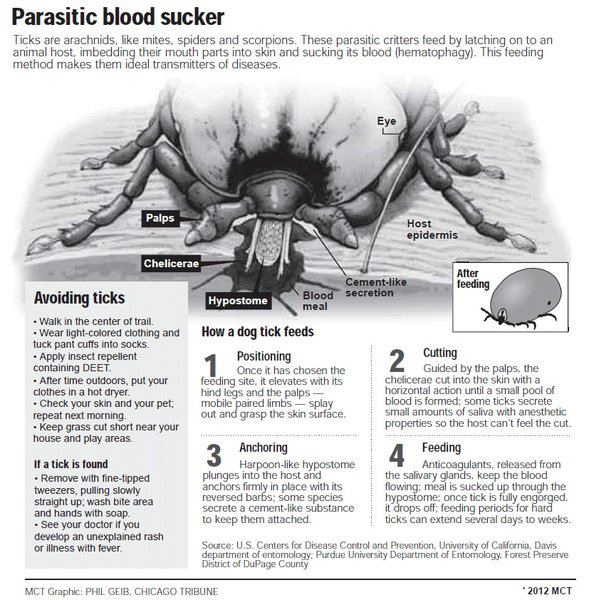Our friends at Redding Nursery shared this important information from the Chicago Tribune
And here is another article from the Tribune on ticks...
By Joan Cary, Special to the Tribune
Haramis said ticks have sticky pads on their feet that allow them to grab on to humans and other mammals. They often hang out in the brush along deer trails and footpaths and hop on when they detect the carbon dioxide from a mammal's respiration. If we have a wet spell, fewer people will be out to get bit, and the "glue" on their feet won't work as well.
Don Orton, of Wheaton, author of "Coincide: The Orton System of Pest and Disease Management," reports that plants are conservatively four or five weeks ahead of schedule this year and pests are following suit.
"Things that often happen here in May were happening in March," he said. "The arrival of pests continues to correlate with the blossoming of plants. The spring we have is like going south and east a couple hundred miles."
The role acorns play
Missy Henriksen, spokeswoman for the National Pest Management Association, said acorns are to blame for what they believe will be large numbers of black-legged deer ticks this summer. A prolific acorn crop in 2010 caused a boom in the white-footed mouse population last year. More ticks survived, and so more will be looking to other mammals for their blood supply this summer, she said.
"The whole cycle of life is what's causing what is suspected to be one of the worst times for ticks," she said. "People are putting on sun protection, but not always thinking about insect repellent. "
Velat said the white-footed mouse is the primary host for the black-legged deer tick and also the carrier of the bacteria that causes Lyme disease. Last year there were 192 reported cases of Lyme disease in the state, according to the Illinois Department of Public Health. In 2000, there were 35 cases.
A tick bite does not always result in disease but the less time the tick is on you the better. Scientists encourage early detection by doing a tick check when you come inside. According to Velat, it takes at least 24 hours for the tick to literally sink his minuscule teeth into you and prepare the bite site for fluid transmission.
Veterinarian Kathleen Heneghan, public education chair for the Chicago Veterinary Medical Association in Burr Ridge, said veterinarians typically begin educating pet owners about ticks in early April, but they sprung into action when they heard of ticks on dogs in early March.
"Based on the early onset of spring it appears it will be a worse than usual parasite — fleas, ticks, heartworm — and allergy season for our four-legged friends," she said.
"We're seeing more allergies, more itchy feet, skin lesions, parasites. There are a lot of miserable pets already."
She encourages pet owners to consult their vet about heartworm medicine and topical medicines for fleas and ticks, and the Lyme disease vaccine.
Many pet owners assume they don't need to worry about parasites if their pet never leaves the yard. But other critters visit at night, even if you have a fence, Heneghan said. "You know how your pet likes to detect those nooks and crannies where other animals have been," she said.
If you find a tick on you or your pet? Experts say use a fine-tipped tweezers to slowly and steadily pull it straight up and out. Drop it in alcohol or flush it down the toilet. Wash your hands and the bite site with soap and water.
![]()
